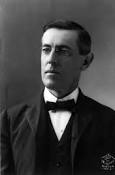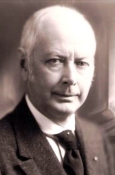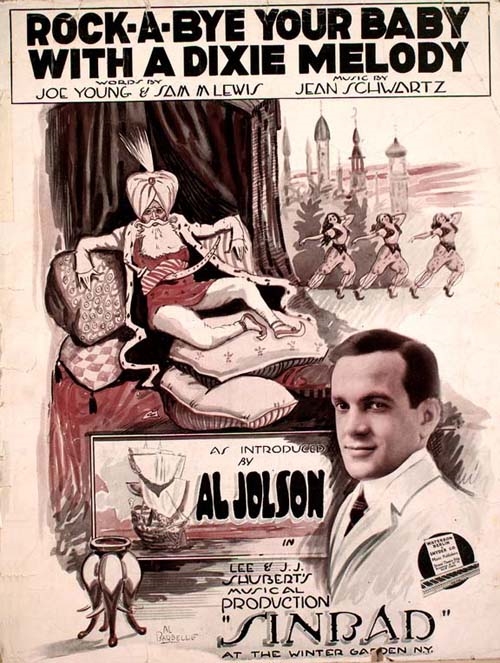
Postage Stamps of the United States - 1918
Politics

President
Woodrow Wilson

Postmaster General
Albert S. Burleson
Music

Click Control Above To Hear
1918 "Rock-a-Bye Your Baby"
Postage Rate
Domestic Letter Rate: 3¢ per oz.
Postcard Rate: 2¢
Registry Fee: 10¢
Foreign Rate: 5¢
The following Air Mail Rates Applied in 1918
Air Mail was available only between selected cities and was not always guaranteed to go by air
Air Mail Rate: May 13 - Jul. 14: 24¢ per oz. - this included Special Delivery
Air Mail Rate: Jul. 15 - Dec. 14: 16¢ for the first oz. and 6¢ for ea. additional oz. - this included Special Delivery
Air Mail Rate: Dec. 15 - Dec. 31: 6¢ per oz. - Special Delivery was optional
Stamps
The Air Mail Stamps of 1918
Flat Plate - Perforated 11 - 100 subject plates

3,095,955 issued
First Day: May 13, 1918
(only 1 FDC Documented)

3,793,987 issued
First Day: July 11, 1918
(only 3 First Day Covers Known)

2,134,988 issued
First Day: Dec. 10, 1918
(only 5 First Day Covers Known)
The "Curtiss Jenny" Air Mail Stamps of 1918
On September 25, 1911, Postmaster General Frank Hitchcock presided over the first "official" air mail flight, a flight of only a few miles from Garden City Park to Mineola, on Long Island, N.Y. By 1918, only seven years later, the Post Office Department had authorized carrying mail via airplane as well as a stamp to promote this air travel. The rate was to be 24¢ per ounce, 14¢ for the "air" portion and 10¢ for the special delivery fee. Since this was a new service the stamp was issued in a distinguishing bi-colored format, in the patriotic colors - red, white and blue.
The 24¢ stamp has the distinction of bringing about perhaps the most famous U.S. stamp, the "upside down airplane stamp", also known as the "inverted jenny". Much has been written about this error, and we will not repeat it here. What we find most interesting about the error, is that the only sheet so issued was issued on the first day, May 13, 1918. When the collector who was inadvertently given the error sheet went back to ask for any others like it, the postal clerk immediately realized his error and, although unable to retrieve the one he had sold, was able to inform higher-ups of the error and no further error stamps were released. Johl states that, of these one hundred stamps, thirteen were somehow lost by the great collector Colonel Green, leaving a balance of 87 stamps.
On July 11, less than two months after the twenty-four cent was issued, the sixteen cent stamp was released to reflect a rate drop in the air mail fee from 14¢ to 6¢, meaning the new rate would be 16¢, including the 10¢ special delivery fee. Since the reduced rate did not go into effect until July 15, the July 11 First Day Covers necessarily included an additional eight cents postage. Covers bearing the First Day cancellation of the new rate, July 15, 1918, bring a premium, but are nowhere near as scarce or valuable as covers dated July 11, of which only three are known.
Finally, on December 10, about five months later, the six cent stamp was issued to pay for air mail service without special delivery, when it was decided that an air mail letter could be handled as a first class letter for the "ground" portion of the delivery. Special Delivery was still available, but was to be paid with a ten cent Special Delivery stamp.
These three stamps are numbered in order of denomination rather than chronologically. Many collectors are unaware of this and reasonably assume that the six cent stamp, Number C1, was the first airmail stamp issued. In fact, the order of issue is entirely reversed from the order of appearance in the catalog.
In summary, three rates for mailing a domestic airmail letter existed in that first year of 1918: a twenty-four cent rate reduced to sixteen cents on July 15 and six cents on December 15. This six cent rate would remain in effect until 1924 - see the air mail stamps of 1923.
The Washington Franklin Postage Stamps Introduced in 1918
Flat Plate - Perf 11 - 100 subject sheets

791,380 issued
First Day: August 19, 1918

296,653 issued
First Day: August 19, 1918
The $2 Franklin of 1918
The Franklin $2 and $5 stamps replaced the designs of the 1902 high denomination stamps. Along with the air mail stamps of 1918, these were the first bi-colored stamps since the Pan American Series of 1901. The two dollar stamp was originally specified to be printed in red and black. Possibly through error or misinterpretation, the initial runs of this stamp were in a decidedly orange color, Number 523 (not shown here).
A little over two years later, on November 1, 1920, this error was corrected and replaced by the originally specified red, or carmine, Number 547.
Although the Post Office records show that nearly 800,000 $2 stamps were printed, most of these were printed in the correct "red" color. It is estimated that fewer than 60,000 of the orange red stamp were issued.
The red $2 Franklin continued in production until 1924, when it was discontinued in favor of the $2 Capitol of the Series of 1922. For the orange stamp, the earliest known cover is August 19, 1918, and for the red stamp, December 6, 1920.
The $5 Franklin of 1918
The $5 stamp was issued on the same day as the $2 stamp, August 19, 1918, although no covers are known from that date. Interestingly, although the production numbers of this stamp are much smaller than the red $2 stamp, the catalog value of the used five dollar stamp, Number 524, is actually less than that of the used red two dollar stamp, Number 547. This is most certainly due to the fact that the $5 Franklin stamp was issued until 1933, concurrently with the $5 America stamp of the 1922 Series, Number 573. The mid-20's and early 30's were a heyday in philately, and saving high denomination stamps in used condition, particularly the $5 stamps, was commonplace.
We find a quote from Johl, United States Postage Stamps 1902-1935, published in 1935, regarding the unused $5 Franklin most intriguing. "It is still quite common and can occasionally be bought at face value at the present time. Only a limited quantity were issued and collectors would do well to buy their copies, especially those saving blocks, as soon as possible, as this stamp will soon be among those "hard to get"."
Early covers with the $5 Franklin stamp are very rare, since most were soaked off the covers by collectors. The earliest documented usage of this stamp is on a parcel tag from June 11, 1926.
The following postage stamp varieties were first issued by the U.S. in 1918:
No new varieties of U.S. commemorative stamps were issued in 1918
No new varieties of U.S. Special Delivery stamps were issued in 1918
No new varieties of U.S. Postage Due stamps were issued in 1918
Ordinary issue:
Number 486 - 1¢ Washington rotary coil perf 10 horiz. No Wmk - EKU: 6/30/18
Number 494 - 3¢ Washington rot. coil perf 10 vert. Type II No Wmk - EDU: 4/16/18
Number 502 - 3¢ Washington perf 11 Type II - EDU: 1/30/18
Number 502b - 3¢ Washington perf 11 Type II booklet (pane) - EKU: 6/12/18
Number 523 -$2 orange and black Franklin - EKU: 8/19/18
Number 524 - $5 green and black Franklin - EDU: 3/20/20
Number 525 -1¢ Washington offset perf 11 - EKU: 12/14/18
Number 529 -3¢ Washington offset Type III - EDU: 4/8/18
Number 530 - 3¢ Washington offset Type IV - EKU: 6/30/18
Number 535 - 3¢ Washington offset imperforate - EDU: 9/30/18
Air Mail: Flat Plate - Perforated 11 - 100 subject plates
Designer: Claire Aubrey Huston - Engravers: J. Eissler and Edward M. Hall
Number C1 - The 6¢ orange Curtiss Jenny - FDC 12/10/18
Number C2 - The 16¢ green Curtiss Jenny - FDC 7/11/18
Number C3 - The 24¢ red, white and blue Curtiss Jenny - FDC 5/13/18





